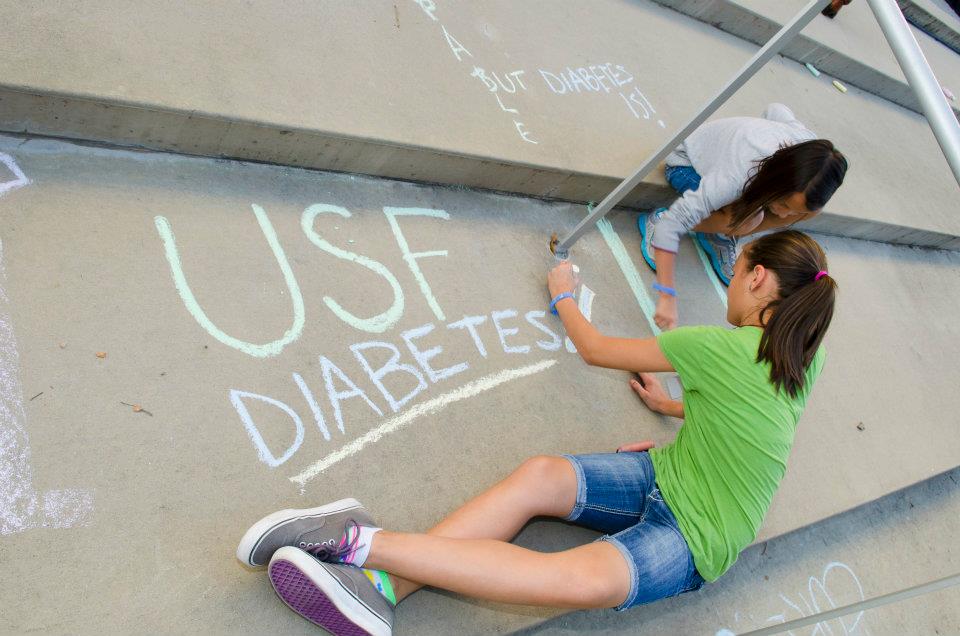
USF Diabetes Center Turns 5, Offering a World-Class Approach to Caring for Kids and Adults with Type 1 and Type 2 Diabetes
Nov. 10, 2016
Dr. Henry Rodriguez is on the move through a modern USF medical center that, for the past five years, has replaced uncertainty and fear with clarity and hope.
You can easily spot him — not just from his trademark bowtie, but his calming voice and friendly smile as he interacts with fellow staff members or patients and parents.

The open layout of the center, for which Rodriguez serves as clinical director, is an impressive one — with a large classroom for teaching sessions with families, a fully operational kitchen where noted chefs demonstrate healthy cooking options, a playroom stocked with toys and games for youngsters, and large examination rooms equipped with flat-screen TVs to help kids relax rather than worry.
But even more impressive than the clinic’s floor plan is the life plan it offers.
This is the state-of-the-art USF Diabetes Center, which celebrates on Monday, Nov. 14 — fittingly World Diabetes Day in the midst of National Diabetes Month — its fifth year as a national leader on the Type 1 diabetes front. The center is the brainchild of USF’s Jeffrey Krischer, PhD, the world’s No. 1 diabetes researcher, who serves as the director of both the USF Diabetes Center and USF Health Informatics Institute. And it became a reality with the philanthropic help of nine Founding Families and nearly 400 individual donors.
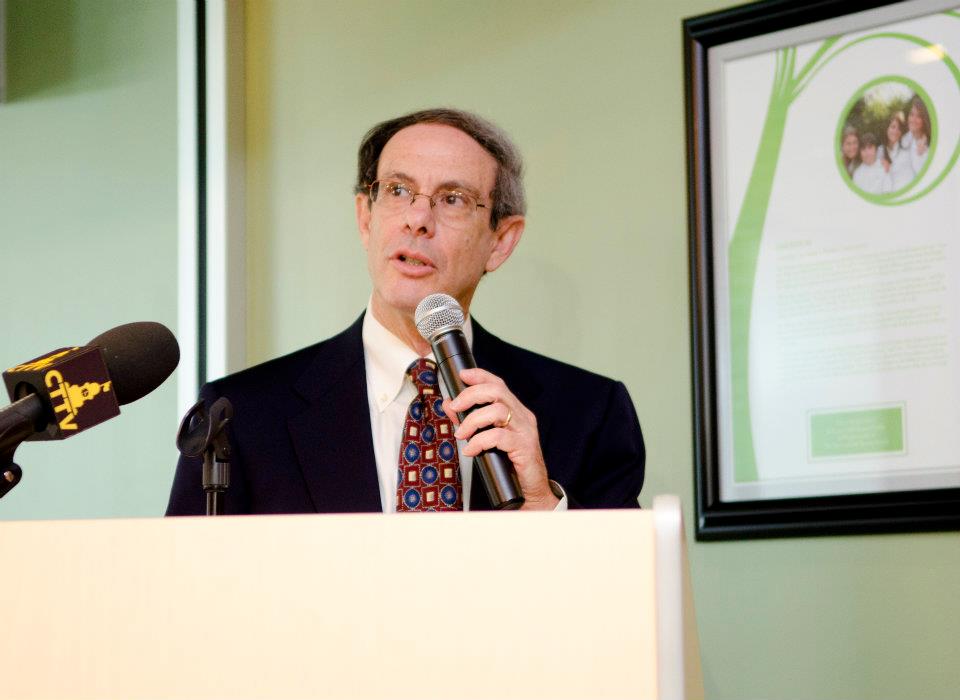
“We offer the best in patient care and education,” says Krischer, “and better ways to understand and treat diabetes through our cutting-edge research.”
The facility also treats children and adults with Type 2 diabetes, which can sometimes be reversed with the right treatment plan. But in spite of steady progress, there remains no cure for Type 1 diabetes , a condition in which the body’s pancreas stops producing insulin. Without treatment, it results in high blood sugar, leading to a potential myriad of health problems with dire consequences.
That is where the USF Diabetes Center has built its stellar reputation. The staff helps families and countless children and teens learn to handle the sudden shock of a Type 1 diabetes diagnosis and then take control of the disease.
They accomplish this through a comprehensive, multi-disciplinary approach to care: offering instruction on the latest technology in pumps and meters, nutrition classes, psychological and social work services, if desired, and world-class research into new ways of managing the disease — and perhaps one day preventing it.
And at the heart of the clinical mission is Rodriguez. He wears multiple hats as medical director, professor of pediatrics and practicing endocrinologist treating both children and young adults — and principal investigator of the USF TrialNet Clinical Center. One of 24 worldwide, the center screens and offers intervention with family members of individuals with Type 1 diabetes — and has been coordinated by Krischer's TrialNet Coordinating Center, based at USF since 2009.
At this particular moment, Rodriguez sees USF senior Emma Donahue, a public health major and aspiring physician, assisting at the front desk.
“Hey Emma, how’s it going today?” Rodriguez calls out with a smile. Donahue, who started as a volunteer, now works part-time, helping patients check in for their appointments and upload the data from their blood-sugar monitoring devices to the office computer system.
She knows the challenges well, having been diagnosed with Type 1 diabetes at age 9 and a patient at the center since her early teens. She even spoke at the ribbon-cutting ceremony five years ago.
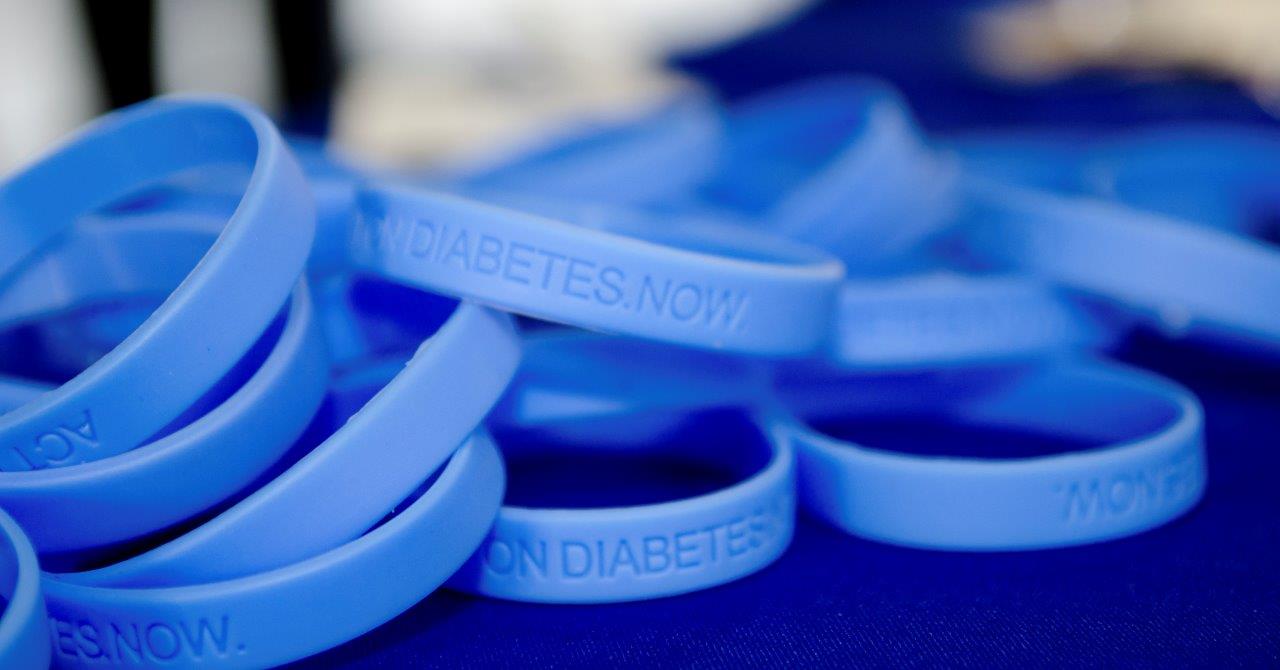
“It’s really amazing to see the progress over the last five years,” says the 21-year-old. “It’s an incredible place — everyone here is family to me. The nurses and staff are wonderful and have helped me so much through the different phases of my life. And it almost feels like I grew up with Dr. Rodriguez. There’s just so much here to help a person with diabetes.”
What helps more than anything, Rodriguez stresses, is knowledge.
“Diabetes, particularly Type 1 diabetes, is all about managing the disease,” he says. “And one of the big keys to that is education. If you don’t do a proper job with that, it’s not going to happen. I’m far more likely to do something if I understand why, rather than just having a doctor tell me to do it. To me, it’s all about patient empowerment — and we want to provide people with the tools and knowledge so they can manage their diabetes well.”
***
In 2011, outfielder Sam Fuld joined the Tampa Bay Rays and became an instant fan favorite with his hustling, all-out style of play. Fuld, who was diagnosed with Type 1 diabetes at age 10, was hoping to find a meaningful way to raise awareness about Type 1 diabetes and serve as a role model for youngsters.
When he paid a visit to the USF Diabetes Center, prior to its official opening, Fuld was bowled over by its vast scope and commitment to ground-breaking research into the disease. He got a grand tour, meeting with USF President Judy Genshaft, Krischer and others connected to the center. The veteran ballplayer knew instantly that he’d found the perfect place to make an impact. Afterwards, he spoke at length with Rodriguez about exploring a sports camp that would benefit children.

“I remember telling Sam, ‘I very much appreciate your willingness to help do this, and if you just want to put your name on it, we’d be grateful and can run it for you,’ ” Rodriguez recollects. “But Sam was insistent on being completely involved, and he just took the ball and ran with it. He began making calls to friends and fellow athletes in the Type 1 community, and the rest is history.”
Another area athlete, former tennis pro Gen King, also lent important support, contributing financially, enlisting other athletes to help out and coaching. And for the past five years, Fuld’s USF Diabetes Sports Camp has been a fixture on campus every February — and Fuld remains committed to supporting the camp despite joining the Oakland A's in 2014.
The event draws hundreds of boys and girls with Type 1 diabetes, from around the region and now the nation, for two days of participation in multiple sports, bonding and learning life lessons from an array of veteran athletes who have Type 1 diabetes as well. “The weekend is just one of the best experiences I’ve ever had,” Fuld says. “You see kids get more and more comfortable handling their disease.”

It’s no surprise that Fuld was — and remains — so impressed with the center that launched his camp. The facility stemmed from Krischer’s early belief in the value of a center focused on the trifold approach of education, clinical care and research. He ultimately sold the idea to the USF Board of Trustees, and every inch of the center’s 10,000-square-foot home reflects that mission.
At the time, Rodriguez was in his 11th year as head of the clinical pediatrics program at Indiana University’s Riley Hospital for Children. But he was excited by Krischer’s offer to come to USF and help build an operation unlike any other in the country. Rodriguez’s parents lived in South Florida, as did his wife's family, so they made the move six months before the Diabetes Center opened its doors.
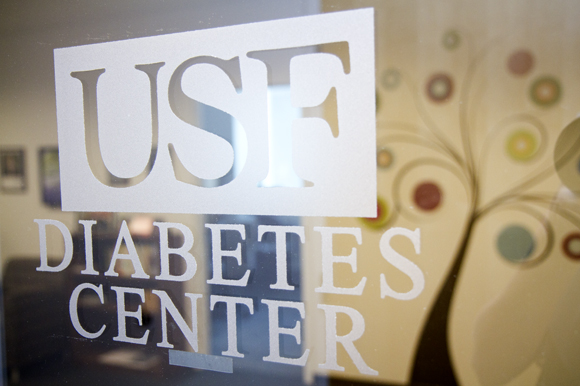
He remembers how the center — located on the fifth floor of the USF Health Carol and Frank Morsani Center for Advanced Healthcare — was an open shell of a space when he arrived in August 2010. He met with an architect, as well with other diabetes team members and families to solicit ideas for the best use of the sprawling area. “They all had input in designing the space,” he says.
That led to the creation of the modern Famous Tate Teaching kitchen for healthy food instruction, along with the warm, open feel and inviting décor of the rooms. “When you look around,” Rodriguez explains, “it’s very obvious that we’re not trying to maximize square footage so we can see the largest number of patients in the least amount of time. We made sure to create a place that didn’t feel cramped or uncomfortable, so everybody can feel like they are getting the right amount of attention and care.”
***
That care is multi-faceted and life-changing, featuring specialized expertise that complements the work of the endocrinologists and nurses: mental health to help Type 1 diabetes patients and families cope with emotional or personal issues; technological education to navigate the many options with diabetes devices; social services to assist with insurance challenges and other obstacles; and nutritional guidance.
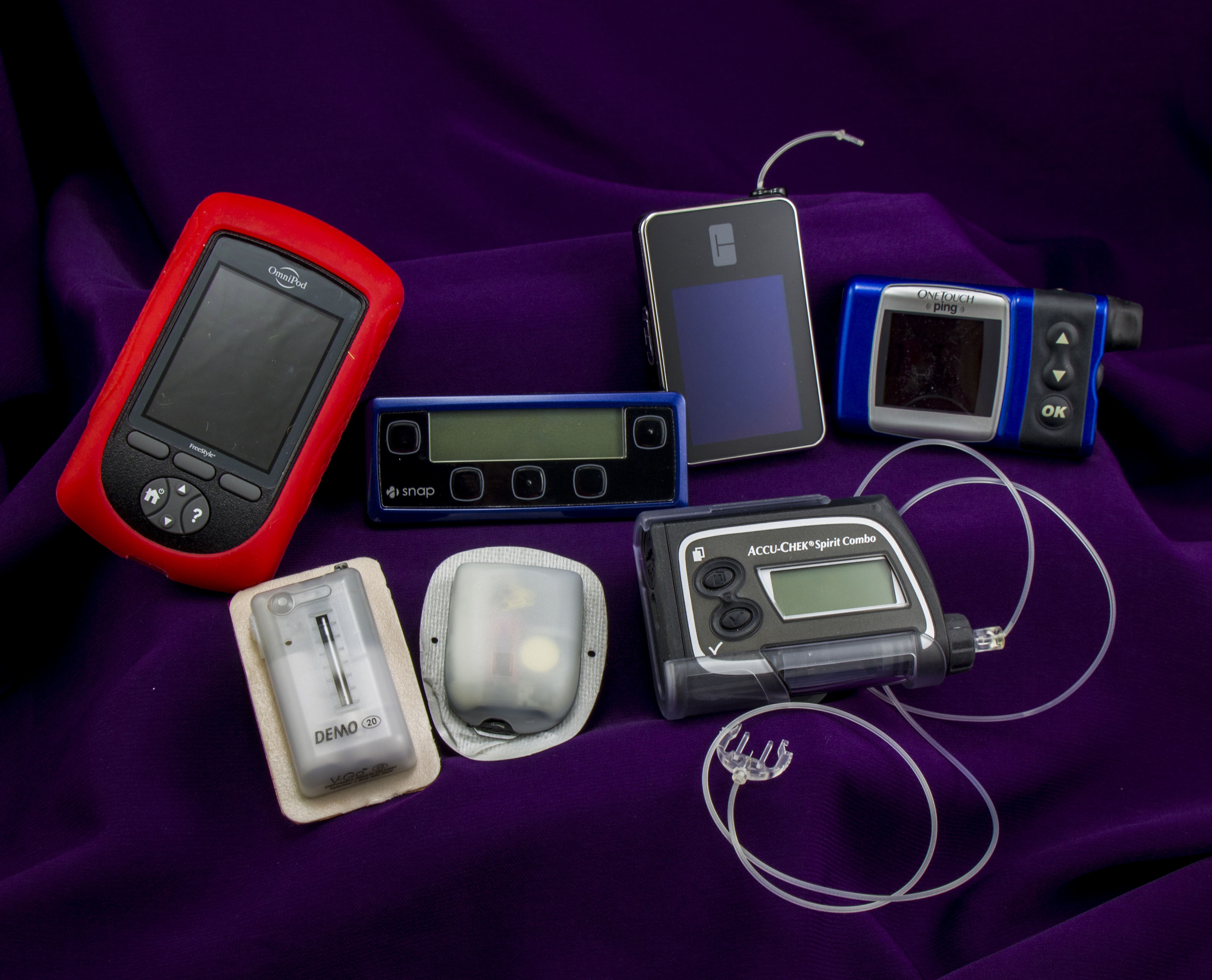
Dr. Laura Smith is the center’s clinical health psychologist and plays a key role in counseling youngsters and adults who may need help in coping with diabetes-related issues. She brings an additional layer on insight, having Type 1 diabetes herself. “The risk of people with diabetes having more general health concerns, like depression or anxiety, is actually twice what we see in the general population,” she says. “Patients often experience what’s called diabetes burn-out, where they just get tired of taking care of diabetes. And I often work with children, adolescents and families, where there’s conflict within the family about how to manage diabetes.”
Janet Rodriguez, a registered nurse, serves as the certified diabetes educator specializing in technology education. She can help patients and parents understand the differences between pumps or explain the value of a continuous glucose monitor — a recent innovation that allows a parent, for instance, to check their child’s blood-sugar number from their smartphone across town.
“Technology is really changing rapidly in diabetes,” she says. “We have USF students, staff and interns who assist patients in uploading data and teach them how to do this at home. They may come in with four or five devices, and we’re able to produce one report so that the patient and physician can view it together — and make the appropriate changes. The technology allows us to work together and assist families and patients in becoming self-sufficient.”
Amanda Vasquez is the center’s licensed clinical social worker. She focuses on working with patients and families to assess their situations and alleviate any obstacles that may hinder them from getting the care or resources they need. “Whether it’s access to insurance, an educational barrier or coping with the diagnosis, there's a lot to learn, and it’s overwhelming,” she says. “Many who come here are just hearing about diabetes for the first time, and it’s a big shock. And it generally affects not just the patient, but their whole family."
Jane Norman, a clinical dietician and certified diabetes educator, promotes proper nutrition and physically active hobbies for children and adults. Norman conducts regular classes on healthy eating at the center, drawing on her 30-year career as a diabetes educator.

“When I started out, a lot of people with Type 2 diabetes just didn’t live past their 50s, because they weren’t diagnosed and already had severe complications,” she recalls. “And those with Type 1 diabetes often had very significant complications by the time they were in their 30s and 40s. We had only one type of insulin and the technology had just been developed, but it wasn’t available for patients for monitoring blood sugar. People were still dipping little sticks into urine to read the sugar.”
But it’s been a whole new world in recent years, with continuing technological advances. Norman does her part to complement that with her dietary classes and individual appointments.
“I run the full gamut of diabetes nutrition education, both Type 1 and 2, children and adults,” she says. “With Type 1 children, I focus in class on the nuts and bolts of what parents need to know to keep the child safe and healthy, then fine-tune the diet as we go. With Type 2, on the other hand, the focus is on lifestyle issues, diet and physical activity, as well as all the different medications. And for both types, it’s important to work on stress management, because people don’t tend to pay as close attention to their health when stressed.”
Stress is the common denominator of the newly diagnosed — and the center knows how to diffuse it. One family that gladly makes the 100-mile drive from Lake Placid, Fla., every three months can attest to that.
***
Life for the Halperns was moving at a normal whirlwind pace six years ago. Parents Michael and Erin led busy lives as teachers in the Lake Placid public school system, while keeping up with three active sons: Kyle, 14, Luke, 9, and Jude, 3.
Then, out of the blue, they noticed something was different about Jude. Over the course of several weeks, he became excessively thirsty, and began wetting the bed. “We’d leave the house, and he’d have to use the restroom five minutes down the road,” recalls his mother. “I was like, ‘Something is going on.’ ” They didn’t know, as so many parents don’t, that these were telltale signs of the onset of Type 1 diabetes.
Erin’s father, who has Type 2 diabetes, occasionally babysat Jude, and suspected what the problem might be. “Are you sure he’s not diabetic?” he asked his daughter. Erin wondered if that might also explain why he’d been feeling sick more than usual. She took him to the pediatrician, and the results of a blood sugar check held the answer: a reading of 400, some 300 higher than normal.
The doctor immediately called Dr. Sureka Bollepalli, a pediatric endocrinologist at the University of South Florida in Tampa.
The USF Diabetes Center hadn’t begun operation, but USF was already known for its outstanding work with the condition. Early the next morning, the Halperns arrived for Jude’s appointment, frightened and weary. But from their first moment, they knew they’d come to the right place.

“It was such a great experience, under very difficult circumstances,” Erin says. “Dr. Bollepalli and all the nurses were so reassuring. And right from the start, they began educating and teaching us how to do finger pricks to check blood sugar and shots. When we drove back home that day, Dr. Bollepalli gave us her cell phone number and told us to call with questions — so it was like we had round-the-clock care.”
“We went through the whole process as a family,” Michael adds. “We were taught what the disease was, how it worked, and what we needed to do for him to be healthy.”
When the USF Diabetes Center opened the next year, Jude was among the first wave of patients. In spite of the lengthy drive, the Halperns have been making the trip every three months for Jude’s regular checkups ever since.
“The facility is amazing no doubt about it,” says Michael. “It’s inviting, comfortable and totally modern. They have everything you need as far as education with nutrition and pumps. But all that said, what really sets it apart is the people who are here.”
Jude is living the life of a typical high-energy 9-year-old, excelling at soccer and math and using a continuous glucose monitor, so he can easily keep track of his blood sugar numbers throughout the day. So can his mom — no matter where she is.
“If I could give advice to any other kids, I’d say don’t give up,” Jude says. “Don’t give up, and trust. Trust the people here, because they’re part of your family.”
***
Stories like the Halpern’s are what the center is all about, as far as Founding Family member Jeff Greenacre is concerned. He and wife Donna have lent important philanthropic support from the start. For Greenacre, the connection is personal: He was diagnosed with Type 1 diabetes at age 30 in 1974, and learned to manage the disease during an era devoid of the technological advantages in recent years.
Greenacre is energized by the role he envisions for the USF Diabetes Center in leading the way on the Type 1 diabetes front. “I love what USF is doing because we have to find a cure,” he says. “People with Type 1 need help today — not down the road. We’re not too far from having a pump smart enough to understand our bodies and function like a pancreas. The technology that’s coming is just amazing. And we have a center here at USF that is already making such a difference in outreach and treatment.”
Rodriguez is also excited about the potential of the development of the artificial pancreas. The first-generation devices, already FDA approved, will utilize the latest technology of insulin pumps and continuous glucose monitors, pairing them with a microprocessor that runs an algorhythm in conjunction with the pump to provide insulin in a way that mimics the pancreas.
“There are still some limitations with it,” he says. “But the system does better than anything we can currently do, in terms of avoiding highs and lows, so we’re moving in the right direction. And the technology will continue to improve.”
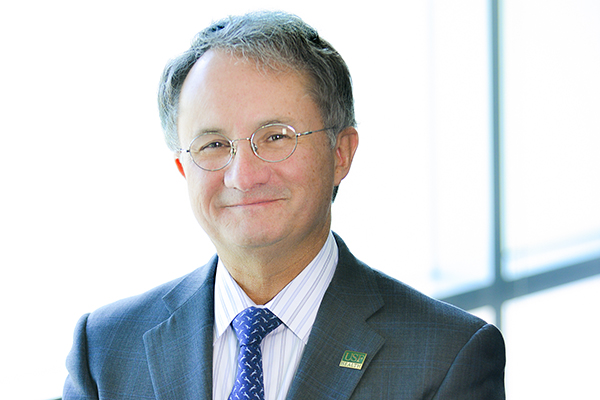
Meanwhile, the center is going strong, with a satellite location in South Tampa — the USF Diabetes and Endocrinology Center (128 S. Westshore Boulevard). And later this year, its scope will be expanding to include adult endocrinology. As always, Krischer remains at the forefront of research, bringing a globally acclaimed profile to the efforts, as noted this past spring by Charles Lockwood, MD, senior vice president for USF Health and dean of the Morsani College of Medicine:
“It truly is extraordinary to see the strides Dr. Krischer and his team are making in powerfully organizing, coordinating and analyzing clinical trial data in diabetes. He and his team at the USF Health Informatics Institute have built a second to none international hub for epidemiological NIH research initiatives in both juvenile diabetes and rare diseases. His research preeminence adds value to all the research we do — basic science, translational and clinical — to ensure that it helps improve patient outcomes while lowering costs.”
The USF Diabetes Center has come a long way in five years, with so many people and entities having made key contributions to the cause — such as the Tampa Bay Juvenile Diabetes Research Foundation; Gary Cornwell, executive director of Florida Diabetes Camps, who each year coordinates participation in Fuld’s USF Diabetes Sports Camp; and former TrialNet Recruitment Coordinator Craig Bobik, who has been instrumental in Fuld’s camp each year.
But pulling it all together is the man with the bowtie, always on the move — and never slowing down for the patients and families of the USF Diabetes Center.
Watch short USF Diabetes Center videos related to this story:
The Halpern Family http://bit.ly/USFDiabetes1
Janet Rodriguez, nurse/educator http://bit.ly/USFDiabetes2
Dr. Laura Smith, psychologist http://bit.ly/USFDiabetes3
Amanda Vasquez, social worker http://bit.ly/USFDiabetes
